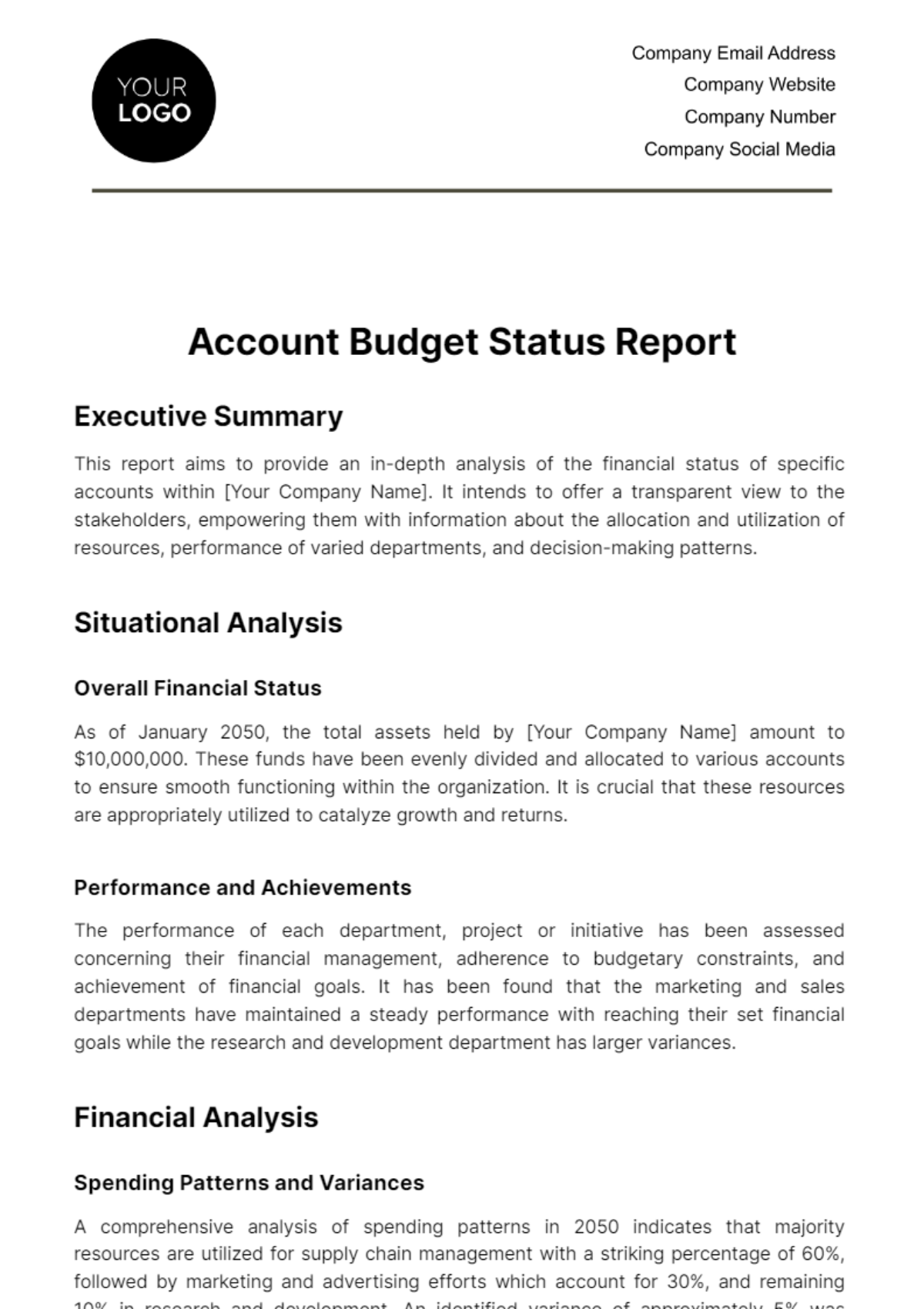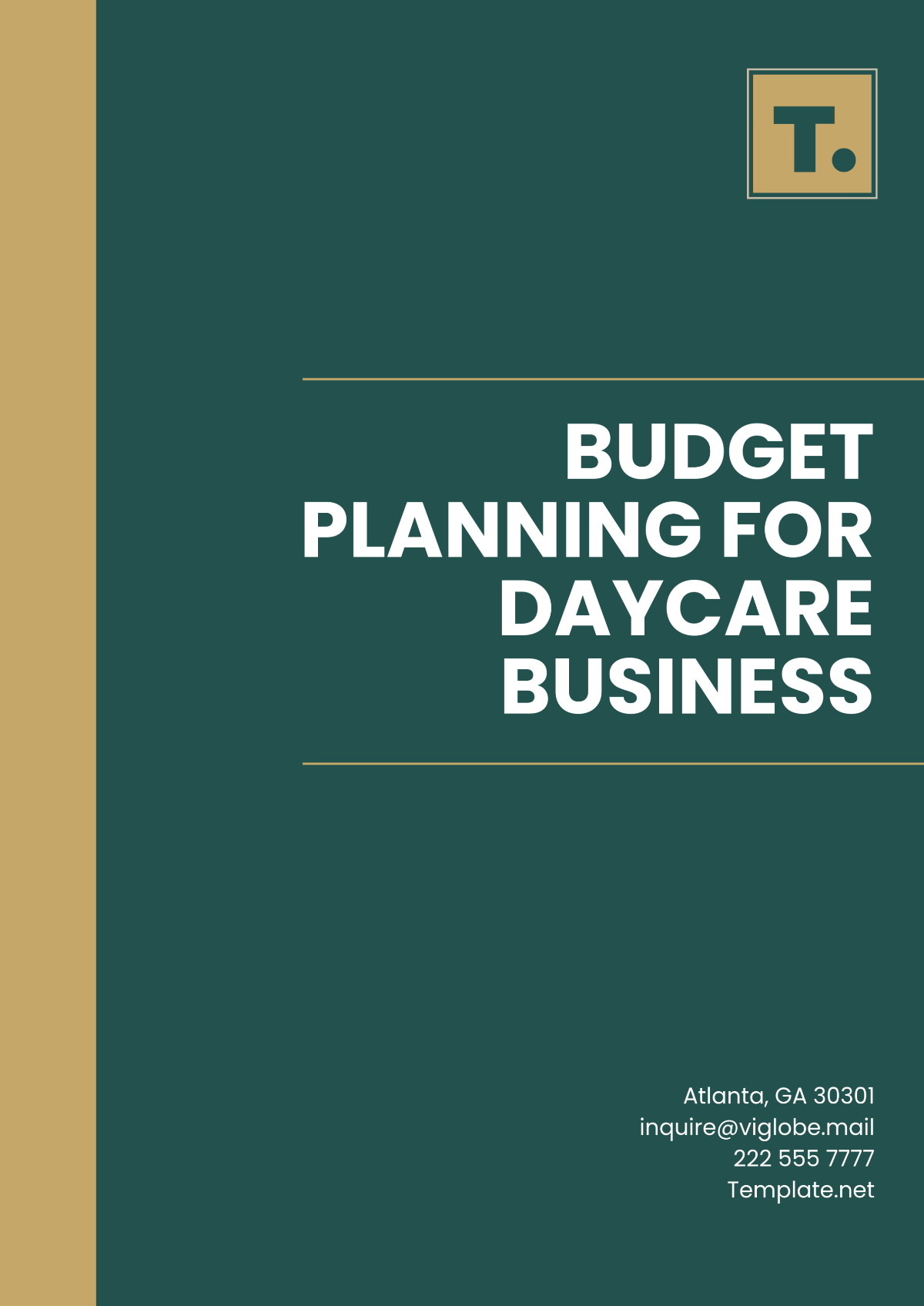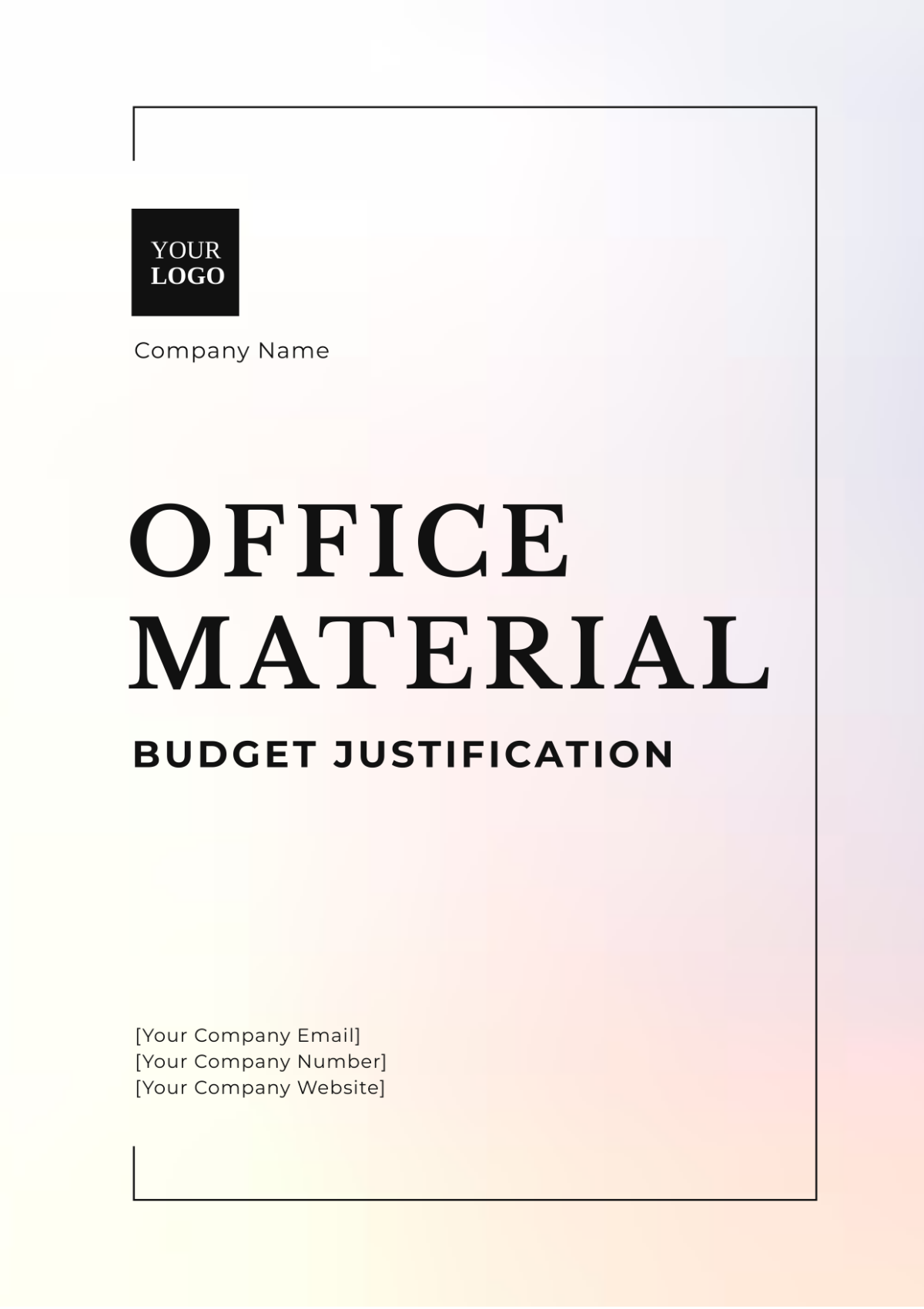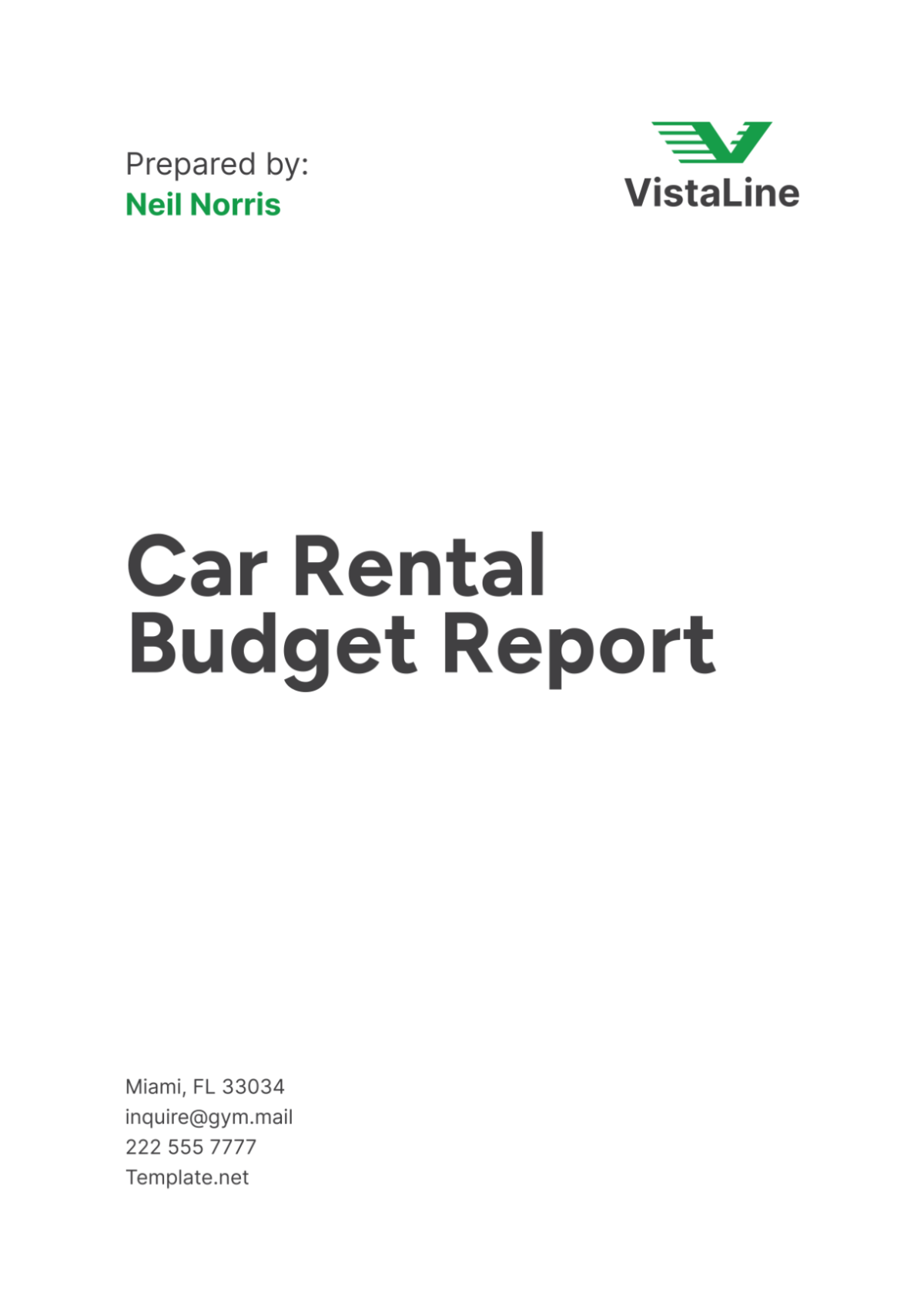Free Budget vs. Actual Performance Report
Stay on top of your finances with our Budget vs. Actual Performance Report Template available at Template.net. This editable template is fully customizable, effectively comparing projections against actual results. Adapt it to fit your specific budgeting needs, and leverage our Ai Editor Tool for seamless modifications that enhance your financial analysis.



























